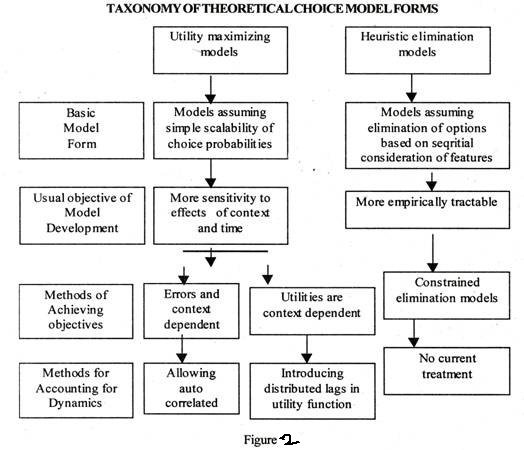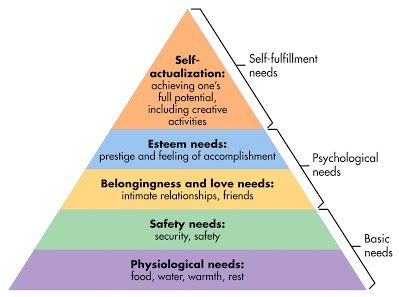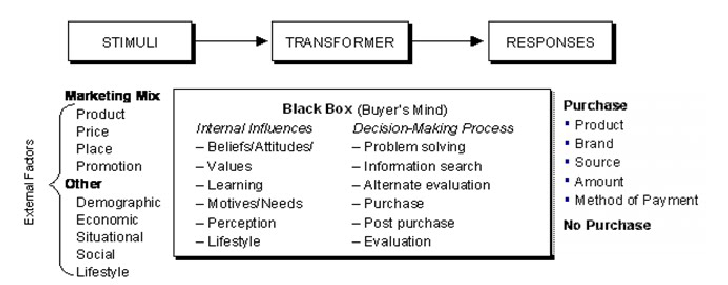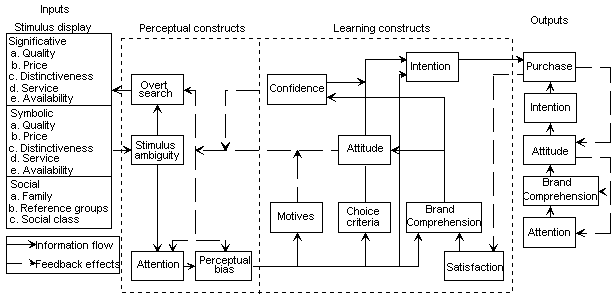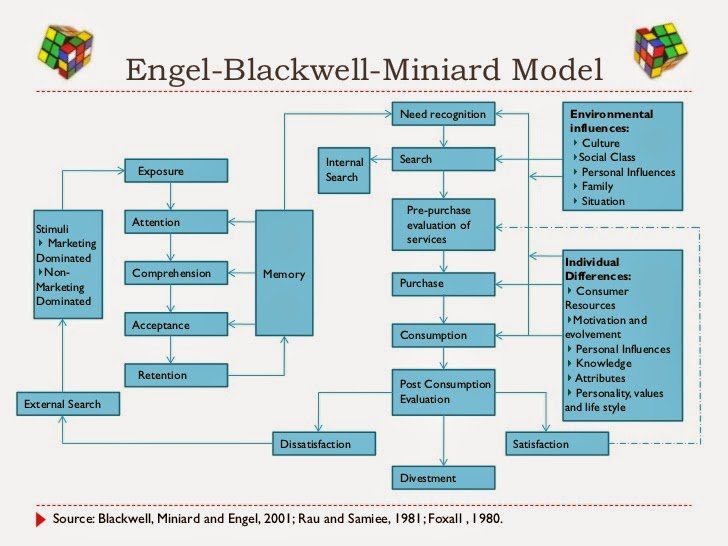Consumer Involvement and Decision Making
The involvement theory is based on the concept that there are low and high involvement consumers and there are high and low involvement purchases. According to this theory consumers involvement depends on the degree of relevance of purchase to a consumer. If for instance, consumer wants to buy a packet of tea or food or bread or butter he does not feel very much involved. It is because the life of these products is very short and ones consumed they exhaust. If the experience with the product is not good, next time some other brand can be purchased.
However, this is not true in case of consumer durables and certain services. If one buys an automobile, refrigerator, air conditioner, furniture, or a house he is forced to use it for long period and cannot change early and if he decides to dispose off there is big loss. Hence in these products there is high degree of involvement, therefore, consumer takes a decision after lot of deliberations. In case of insurance policy ones taken one has to live with it.
Based on this hypothesis researchers have developed theories of high relevant/high involvement, low relevance/low involvement. In case of high involvement products the consumer collects all possible information and access it in detail based on his knowledge and makes efforts to get the opinion of family members, relatives and friends and some times even of experts.
If some one decides to buy a car he will consider large number of attributes but in case of daily consumption items, the same consumer will make quick and effortless decision. The involvement is dependent not only on nature of product or service to be purchased but also on the psychology of the consumers. Even for same product involvement is not uniform for all consumers. For instance if a packet of tea or biscuit is to be purchased, there are consumers who take it casually and simply ask the retailer to give a packet without mentioning any brand and everything is left to the retailer.
For such consumers tea is tea and biscuit is biscuit. They are not brand conscious nor make any investigation before purchases. But for same tea or biscuit there is other set of consumers who will collect information about various brands available in the market and their attributes. Thus degree of involvement differs not only on the nature of product but also on the psychology of consumers.
Some consumers take risk even for vital services and products. They take decisions without consideration of all attributes. For instance, if some one needs to be admitted into a hospital for treatment of serious injury or fracture there are persons who will take treatment in a near by hospital. But there are other persons who in a similar situation will make lot of inquiry before deciding the hospital for admission.
Thus there are two set of factors which decide the degree of involvement:
- The nature of product or service and
- The psychology of the consumer
Still it can be generalized that degree of involvement depends upon perceived risks in buying a particular product, the higher the risk, the deeper is the involvement. Based on this generalization there can be three degrees of involvement – high, medium and low depending upon period of impact of purchases. Higher degree of involvement is in a product of long life or in services which have long term impact on consumer. The medium degree of involvement is in items or services which have medium term impact upon life and the low involvement is in product and services which have short life and once used cannot be used again, “a few illustrations are given in Table 1”.
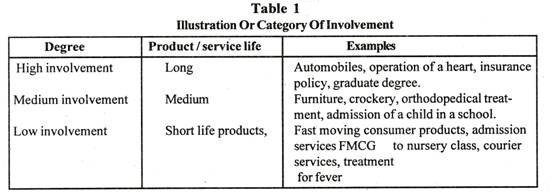
Antecedents of Involvement
The degree of involvement depends upon past history of buyer i.e. on his level of knowledge, information, psychology, culture, life style, social system. Depending upon the circumstance of an individual, his involvement differs even for the same service or product. There is no clear cut and universally acceptable definition of involvement.
According to one view there are five types of involvement namely:
- Ego involvement
- Commitment
- Communication involvement
- Purchase importance
- Extent of information secured
Accounting to Judith L. Zaichkowsky (conceptualizing) involvement (Journal of Advertising 15 (2) 1986), the involvement theory deals with advertising, with products, and with purchase decisions.
There are other researchers who see the person, product and situation as major important part of involvement. According to David W. Firm in his article on the Integrated Information Response Model in Journal of Advertising (1984) the involvement depends upon purchase situation.
In spite of the fact that there is no unimanity about the concept of involvement, it is an important element of consumer behaviour and purchases of all high value and durable products depend upon it. Similarly services which are vital for life like medical services there is high level of involvement.
Ego involvement is to satisfy ones ego. For instance, if in a family there are five – members husband, wife, two daughters and one son every one would like to be involved in purchase decision not only for a product he consumes directly but also for products consumed by other family members.
Wife would like to be involved in purchase of shaving cream, underwear and garments for her husbands. Husband would like to be involved in purchase of cosmetics for the use by his wife and /or daughters. The son and daughters would like to be involved in purchase of TV, Car, house for satisfaction of their ego that they must be consulted before purchase and due importance should be given to their views-likings / disliking’s of a particular brand or model of a brand.
Commitment is another factor of involvement. If wife or son has to be treated for any illness, husband or parents are highly involved in countries like India where there is great attachment in each other. Parents are committed that their children get best education within their means so that they may make good future for themselves.
Communication involvement relates to share the available information with others in the family and /or organization who are involved in buying a product or service. For example, if a right dentist is to be located for treatment and if one member has some information on the subject, he should communicate it to the person who is going to take a decision.
Similarly if some one is going to buy a car and some one has information about one or more models he should communicate to other members. The other side of communication involvement is that marketer must make the information reach the consumer i.e. there should be proper and effective communication between seller and buyer whether it is FMCG or consumer durables or in industrial goods.
The involvement also depends to a great degree on the importance of purchase. If some one needs bypass surgery of heart best possible hospital and heart surgeon will have to be located, thus there has to be high degree of involvement. If an house or flat costing Rs. 10 lakhs to Rs. 50 lakhs or more has to be purchased the location should be healthy, house title should be clear to avoid risk of ownership. Against this if one is buying wheat or sweets there are little risk and so level of involvement is low.
The extent of information search is part of purchase importance. If the purchase is important; information search is intensive from all possible sources. But if the purchase is not important and is of routine nature there is limited information search.
Low Involvement Decision Making
When the stake in an item to be purchased or service to be utilized is not much and the risk of wrong decision is only short lived, decision making involves low involvement. If for instance consumer decides to buy X brand washing powder and does not find it suitable it can be rejected and repeat purchase is not made of the same brand. But the loss due to buying decision is limited to the cost of the powder.
If one develops fever and visits near by doctor and he takes longer time than normally required he can be discarded. If some one sends a courier mail from Delhi to Mumbai and it does not reach next day the service can definitely be rejected for next mail but if the mail contains important documents delay may cause loss and so risk is involved.
Thus the low involvement does not depend entirely on the nature of product or service but also on other factors such as its consequences. Therefore, even in some low involvement product or service decision making has to depend upon other factors too. However, on the whole generally no or very limited inquiry is done tor low involvement items. Very often some inquiry is made from seller but its attributes vis-a-vis of alternatives are not evaluated.
Unplanned Purchase Behaviour
All purchase by any consumer is not preplanned. When a wife visits a market for planned purchases and if something which was not in the list she likes or finds it a bargain on-spot the short decision is taken for purchase which is called unplanned purchase. The unplanned purchases may be defined those purchase decisions which are taken on the spot without any prior planning.
Such purchase is quite large when one visits an exhibition or visits a religious place or visits mela like Khumbh Mela. One sees many products at these places and makes purchases for oneself, relatives and friends, for gifting or when innovative products are available. Generally when one visits such places he takes money for such purchases but does not know what he is going to buy.
The purchase decision in such circumstances is called unplanned purchase decision. The basic point to observe is that no prior inquiry is made nor prior information is collected. But in such purchases also often alternatives are available and one has to decide which product is better. This depends purely on mood at that point of time and liking or disliking of a particular product or its alternative. It will not be correct to say that all unplanned purchase decision is taken without considering alternatives.
Theory of Low Involvement
Low involvement is applicable when neither performance nor image dimensions are very important. In such cases there is very vague or shallow impression and product is readily accessible. For instance, if one buys sugar one is not bothered about the name of the factory which produced it because all sugar is alike.
This was the case with wheat flour also till recently but now with a number of brands, the level of involvement is increasing. In India where larger number of products is sold without brands the level of involvement is low. This is particularly true of rural market or poor persons purchases who largely buy a product and not a brand. In such cases use of brain is very limited. For poor person tea is tea and sugar is sugar. He takes decision largely on price consideration because “beggar cannot be chooser”. Thus use of brain is minimal.
According to involvement theory involvement depends upon the importance of product in purchase. But this is not always true. In India a person below the poverty line only decision is that he must get a product be it wheat, tea, sugar, bread or milk, because he has little choice to make.
However, theory remains in tact that the level of involvement depends upon the product to be purchased and involvement remains low in case of commodities and goes up as the level of purchases relates to branded products. The persons, the product and the situation decides the degree of involvement. Thus a poor person in India has low involvement in purchases. The product of general nature and of daily consumption does not involve much risk and so have low involvement.
The other important factor in low involvement theory is that purchase decision in such cases have little impact of advertisement and consumer tries new brands for experience and adopt them if found suitable. In such cases job of marketer is to make consumer aware about a particular brand so that it may be purchased instead of alternatives.
There must be attractive displays in shops and stores so that it may catch the eye of the customer Packaging also induces customers repeatedly some brand and packaging promotes purchase behaviour in case of low involvement products.
Strategic Implications of Low Involvement Decision Making
In case of low involvement decision making it is more likely that consumer changes the brand if he finds equally good brand in the market or there is bargain sale or discount sale. In products of low I involvement there is class of consumers for whom “brand loyalty” has little meaning. Moreover studies in India suggest that brand loyalty is weakening.
The bargain sales are attracting customers like buy two trousers and get-one free, buy a toothpaste and get tooth brush free, buy Nature Fresh Atta and get a scratch coupon free. There are a number of others who offer 10 to 20 percent extra quantity without extra price.
The consumer purchase decisions are influenced by such bargains because he belongs to none specially in case of low involvement products. The thumb rule in Indian discount bazars is that who gives best deal to buyers thrives. It has been realized by marketers that price value score cover brand.
This trend is most visible not only in garments but also in FMCG. Therefore Lux offered Rs. 5 discount. Good Knight mosquito mats offered free soaps, The management of Shoppers Stops admits that discount sales work well for its store because it sells more and attracts new customers Bombay Dyeing has discount sales every year.
Since Bhilwara group announced 15 to 50 percent discount its sales have doubled. If there is no basic difference in a product consumer decision is based on discount or incentives available. But brand loyalty is continuing in certain items like cosmetics and design and quality conscious customers. However, the share of such buyers in total is declining and strategic planners will have to keep this fact in mind.
Now buyers for low involvement products decide on the basis of price and value over brand at least in India where purchasing power of majority of consumers is limited.
Complex Decision Making
In case of high involvement products and services decision making is complex and difficult. If for example some one is seriously ill besides the reliability of a doctor one has to look to his pocket and permanent loss of funds if treatment does not succeed.
The heart operation cost Rs. 3 Lakh in one hospital and Rs. 1 lakh in another hospital. The concern person has to decide whether it is worth spending Rs. 3 lakhs instead of Rs. 1 lakh. In such case psychology, emotion, price, pocket play a part along with reliability. There are social culture inputs consisting of non-commercial influences which are considered. Social class, culture, sub-culture, information, recognition, opinions of users all play apart.
If some one decides to buy a car, it is available from Rs. 2 lakhs onwards going up to Rs. 25 lakhs or more for imported car. The decision to buy a particular model does not depend mearly on technical factors, reliability of operations, trouble free operation but also on non-utility factors.
The buyer considers his status, ego satisfaction, impression on friends and relatives and satisfaction that most of his known persons do not process that high price model. But there are others whose decision is based only on utility.
In that case he has to collect information on all the possible models, compare there technical and non-technical features, narrow down his choice to two or three models before taking the final decision. At this stage friend who have experience of driving that model or who knows about automobiles is consulted.
In any other high involvement item also the process is quite complex. First, one has to collect information on alternative choices, evaluate them not only in term of performance, reliability and durability but also price.
One is required to work out cost benefit analysis and terms of payment. It is difficult to evaluate all these complex factors. When some manufacturer is offering wide range of TV or refrigerator task becomes all the more complex.
Model of Consumer Involvement
There is no one single model of consumer involvement in all situations and in all products but in all cases there are three major components – input, process and output. As an economist Mc Fadden (1981) has described the multinomial logic model based on macroeconomic theories of choice. In contrast, Yellot (1978) has described the same model as a descendent of psychological theories of comparative judgment development in the late 1920.
In figure 2 a taxonomy of theoretical choice model form is given. The economic theory presumes that an individual attempts to maximize utility and thus choice is made in such a manner as to achieve this objective.
